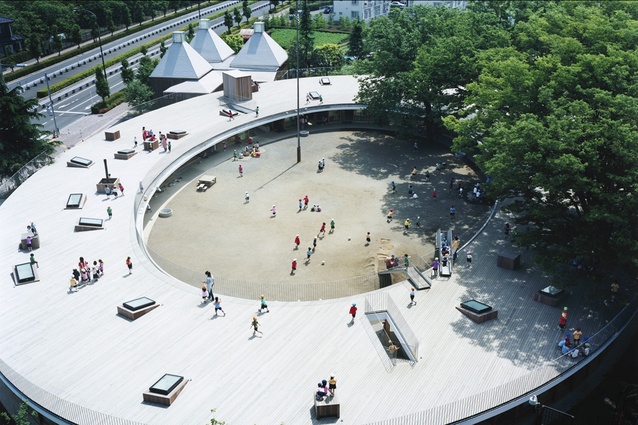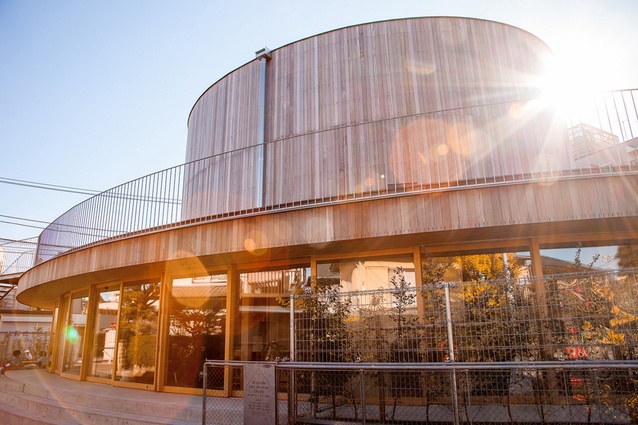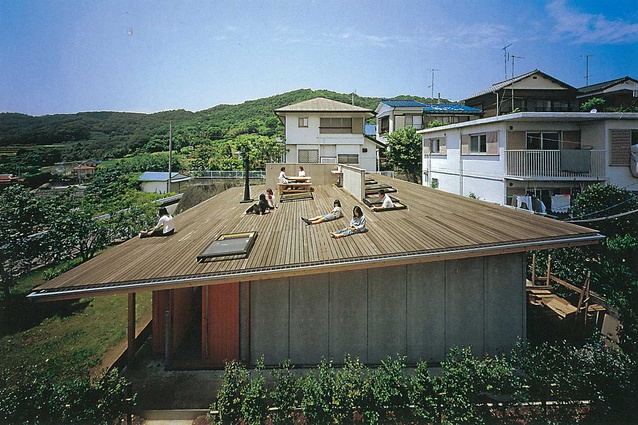Architect interview: Takaharu Tezuka
At the Australasian Student Architecture Congress in Melbourne held on 2-4 July 2015, Sam Aislabie, Sam Boanas and Ryan Mahon had a chance to speak with Takaharu Tezuka of Tezuka Architects. The architect in blue describes his work on a new project in Christchurch.

Sam Aislabie: We would like to ask you about your project in Christchurch, could you explain what you are doing there?
Takaharu Tezuka: I am designing Cathedral Grammar School. There was a competition about one and a half years ago, and we presented an idea to make a timber building, because it was working around cities and towns in New Zealand. Then I found out it was mostly timber structures that survived in the earthquake. So many stone and concrete walls fell down, but timber structures were still standing up.
I then also found out that the structure you had been using is quite different from normal timber construction. Some of the builders used to be ship builders. If you look at the way to put the planks together it takes the shear force, it helps the ship to be stiff against a twisting moment - obviously effective against earthquake. So I said that maybe in earthquake countries like Japan and New Zealand it is a good place to use timber.
Some people say that timber is not long lasting, this is not true, in Japan we have experience building timber things more than 1,000 years old. The good thing about timber is that it ages quite nicely - when it gets older it looks nicer. I want to use timber as a timber – I know that there are so many technologies using timber just like concrete or steel structures but I don’t like that because it wastes the nature of the timber.
Timber should be designed for the balance between shear forces and bending moments, and the joints is very difficult to deal with. We are not using metal joints; we are using just a few bolts to make the joinery work. We want it to age nicely.
Sam Aislabie: How did you get involved in Christchurch?

Takaharu Tezuka: It started with my lecture and workshops in Auckland, I know your Professor Andrew Barrie, he is a good friend of mine. When I got an email from the head of Cathedral Grammar School I called Andrew right away, I said I have the opportunity to join this completion, but I need a very good partner. Andrew is very smart and has a good network in New Zealand. So I asked him to join me and we entered the competition together. The head of Cathedral Grammar came to my lecture and he liked my kindergarten very much. That’s how it started.
Ryan Mahon: You described how the design at Cathedral Grammar is being driven by the timber construction. Do you often work starting from a material first?
Takaharu Tezuka: No, my approach is always different. But after the earthquakes in Japan, the demand for timber is getting larger, because after the earthquake people want to regain this tradition. In the earthquake much was lost, so when building you want to get the future at the same time as the past. We are doing a lot of timber things, but at the same time, I am doing high rise in Tokyo, and I can’t make a 200 metre-tall building in timber. So material is just one part.
Sam Boanas: Are there similar things happening in post-earthquake Japan to Christchurch, are people responding to disaster-building in a similar way to here?
Takaharu Tezuka: Very different. Fukushima is very polluted. Fukushima used to be known to have the richest nature in all of Japan. Now it is ruined by the nuclear reactor, a very big mistake. In Christchurch it is different, people may not be able to go back to Fukushima for 30 years. Even after 30 years I don’t think children will be able to live there and play on the ground. Christchurch has a very promising future. New Zealand sent one of the biggest rescue teams to Japan after the earthquake, even for one of the smallest populations. It’s very amazing, we will never forget that. We owe you a lot.

Sam Aislabie: I think it was reciprocal, many Japanese came to help in Christchurch too.
Ryan Mahon: Do you have any thoughts on the possible future of Christchurch?
Takaharu Tezuka: I think instead of just making interesting architecture, it is important to keep the idea of the garden city. The beauty of Christchurch is the greenery. There are many architects interested in making big gymnastics centres or things that could be built anywhere. But you should never forget what you used to have. It’s quite unique. If you want to be staged internationally, you must try to be local. Because I don’t want to see an ‘international’ in Christchurch. It should be unique. This doesn’t mean going backwards.
Sam Aislabie: Back to your project in Christchurch, what stage is that at?
Takaharu Tezuka: We have just finished the foundations. Most of the structure should be built by the end of the year.
Sam Aislabie: Are you operating out of Japan or is that all happening in New Zealand?
Takaharu Tezuka: We did much of the drawing and modeling in Japan, but I always collaborate with Andrew Barrie, and he is very good at dealing with construction sites. I am leaving all the problems to Andrew! I can see his hair getting whiter!
For more information on the programme and speakers at the Australasian Student Architecture Congress, see the website.













